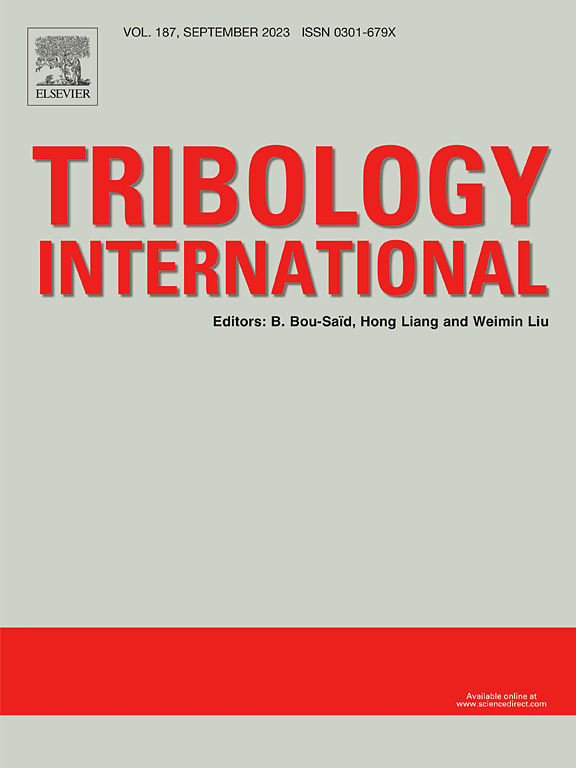Continuous formation and removal mechanism of tribolayer on silicon carbide under water lubricated conditions: A ReaxFF reactive molecular dynamics study
IF 6.1
1区 工程技术
Q1 ENGINEERING, MECHANICAL
引用次数: 0
Abstract
To reveal the mechanism why low friction state of SiC/water system is maintained through the repeated formation and removal processes of tribolayer, we performed molecular dynamics sliding simulations. Our results revealed that tribochemical reactions of amorphous SiC (a-SiC) with water form tribolayer consisting of silica-based layer and carbon layer, and constant supply of silica-based layer by continuous tribochemical reactions is required to maintain hydrodynamic lubrication, whereas the carbon layer prevents adhesion. However, if carbon layer covers the entire interface, it would prevent hydrodynamic lubrication. We proposed here that uneven distribution of chemical bonds in the a-SiC substrate is important for maintaining hydrodynamic lubrication and low friction, because such distribution continuously forms the silica-based layer and carbon layer at the same time.
求助全文
约1分钟内获得全文
求助全文
来源期刊

Tribology International
工程技术-工程:机械
CiteScore
10.10
自引率
16.10%
发文量
627
审稿时长
35 days
期刊介绍:
Tribology is the science of rubbing surfaces and contributes to every facet of our everyday life, from live cell friction to engine lubrication and seismology. As such tribology is truly multidisciplinary and this extraordinary breadth of scientific interest is reflected in the scope of Tribology International.
Tribology International seeks to publish original research papers of the highest scientific quality to provide an archival resource for scientists from all backgrounds. Written contributions are invited reporting experimental and modelling studies both in established areas of tribology and emerging fields. Scientific topics include the physics or chemistry of tribo-surfaces, bio-tribology, surface engineering and materials, contact mechanics, nano-tribology, lubricants and hydrodynamic lubrication.
 求助内容:
求助内容: 应助结果提醒方式:
应助结果提醒方式:


